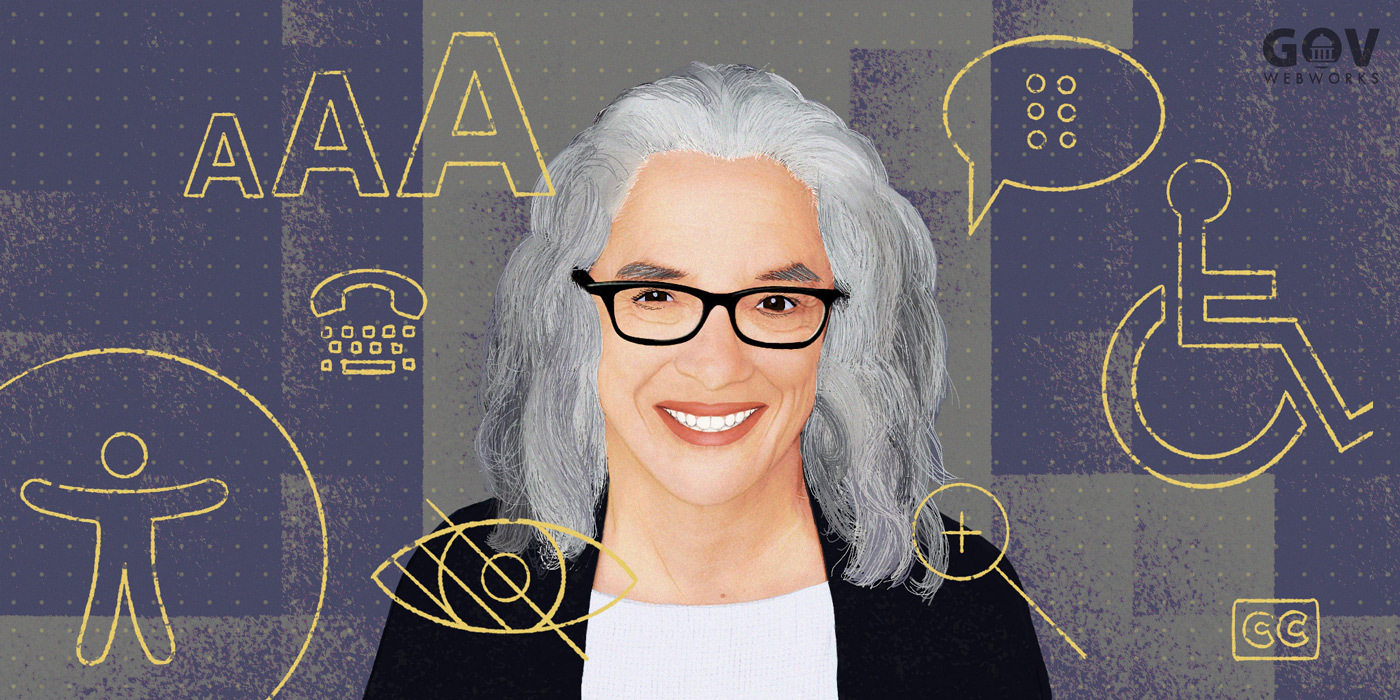Our Industry Experts interview series brings insights from authors, consultants, coaches, and other leading experts on topics relating to online digital innovation. In this interview, Lainey Feingold, a disability rights lawyer and author, advocates for technology and information access for disabled people. She also defines Structured Negotiation, a strategy to bring together people, business, and government to make tech available to all.
+++
When Lainey Feingold took a temporary post at the Disability Rights Education and Defense Fund in 1992, she never realized it would lead to her life’s work. A lawyer by profession, she was asked to help a group of blind disability rights advocates collaborate with banks to develop Talking ATMs. A few years later, when the country’s first Talking ATMs were getting ready to be rolled out, one of her blind clients said, “Good job with the ATMs, but now we can’t use this new thing called online banking.”
That led to her first web case in 2000, when she and her clients and co-counsel negotiated with Bank of America to adopt the new Web Content Accessibility Guidelines (WCAG). The rest is accessibility rights history and led to her first book, now in its second edition, Structured Negotiation, A Winning Alternative to Lawsuits, on how to adopt her unique approach to negotiated settlement agreements.
“I practice collaborative law, which in the digital accessibility space we call Structured Negotiation,” Lainey explains. “It’s a very client-centered type of law. The first step is to write a letter and tell people’s stories about the disability barriers encountered. Each success we’ve had is attributed to the people we work with in the disability community.”
We asked her how she developed her approach and what agencies can do to embrace accessibility for their teams and online tools.
Why has Structured Negotiation been so successful in building accessibility rights?
People are hungry for solutions that don’t involve fighting. As any lawyer will tell you, going to court is not just stressful on a personal level, it’s stressful for clients and takes a very long time.
Since most cases involve sitting down at a negotiating table at some point, why not start at a negotiating table before anger and mistrust have an opportunity to take root?
When we have a settlement agreement with a public or private sector organization, no one is found to be guilty, so no one’s accused of violating the law. In the second edition of my book, I share stories about how some lawyers have filed a lawsuit but then use structured negotiation to make the process less confrontational. For example, in a case that was filed against ADP, the payroll software organization, they immediately went to Structured Negotiation and agreed to put the litigation on pause so they could try to work it out, which resulted in a great settlement.
A lot of places are willing, if they’re being approached with a collaborative mindset, to say, “Let’s take this as some feedback about what we could do better.”
Continue on GovWebworks blog>>>>
Highlights
“We need to change the culture to understand that people with disabilities are in every aspect of the work, not just as consumers, but as creators, employees, and decision makers.”
“We show people that the things they already care about include accessibility rights. They just didn’t know it yet. Then it doesn’t feel like such a leap.”
“I have a quote on my printer that says, “The future depends on what you do today.” The key thing is to start.”
Join our team
We’d love to hear from you. We have a variety of remote and hybrid positions available.
- Check out our current job openings
- Contact us with any questions
- See PWW/GWW clients: Portfolio of work
- Visit us on social media: LinkedIn, Facebook, Twitter, Instagram
